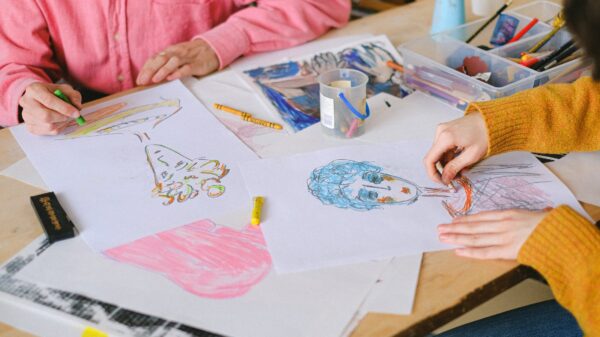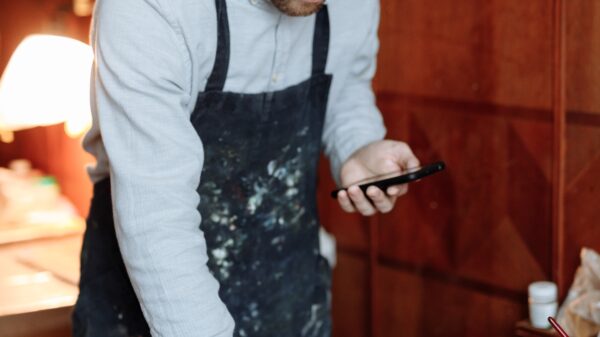Color has the power to stir emotions, evoke memories and create a lasting impression. It’s no wonder that art is known for its ability to captivate us with its vibrant hues and intricate patterns. But have you ever stopped to consider the psychological impact of color on our focus? In this blog post, we’ll take a deep dive into the fascinating world of color psychology and explore how it influences our perception and concentration when creating or appreciating art. So get ready for a colorful journey as we uncover the power of color in art!
Introduction to Color Psychology in Art
Color psychology is the study of how colors affect our emotions and behaviors. While there is no one-size-fits-all answer to how colors impact us, certain hues can trigger certain feelings or evoke certain memories. For example, the color red is often associated with anger or danger, while blue is often seen as calming and serene.In the realm of art, artists utilize color to create a desired mood or feeling.
How Color Affects Our Mood
It’s no secret that color has the power to affect our mood. While some colors are associated with happiness and positivity, others can trigger more negative emotions. This is why it’s important to be intentional about the colors you surround yourself with. Here’s a closer look at how different colors can impact our mood:
Yellow: Yellow is often associated with happiness and sunshine. It’s a cheery color that can boost your spirits and help you feel more positive.
Blue: Blue is calm and serene, making it a great choice for bedrooms or other relaxing spaces. It can help you feel more relaxed and promote better sleep.
Green: Green is the color of nature, so it’s no surprise that it’s often associated with feelings of peace and relaxation. If you’re looking to create a calming environment, green is a great choice.
Purple: Purple has long been associated with royalty and luxury. It’s also thought to promote creativity and imagination. If you want to add a touch of elegance to your space, purple is a great option.
Red: Red is energizing and exciting, making it perfect for high-energy spaces like home gyms or offices. While too much red can be overwhelming, a little bit can go a long way in boosting your energy levels and promoting productivity.
Color Symbolism and Meaning
Color is one of the most powerful tools in an artist’s arsenal. It can be used to create a mood, set a tone, and even evoke certain feelings. But what exactly is color symbolism and meaning?
Color symbolism is the use of color to represent certain concepts, emotions, or ideas. And these are just a few examples – there are endless possibilities when it comes to color symbolism.
So, as you can see, colors can mean different things to different people. But regardless of what they mean to you personally, there’s no denying that colors can have a profound effect on our emotions and state of mind. So the next time you’re creating art, take some time to think about the colors you’re using and what they might symbolize for your viewers.
The Effects of Different Colors on the Brain
The color of an object can affect our emotions and the way we perceive things. Colors can be used to influence our behavior, both on an individual and a societal level.
different colors can have different effects on our mood and behavior.
While there is some scientific evidence to support the idea that colors can affect our emotions and behavior, it is important to remember that everyone experiences color differently. What one person finds calming may be energizing for another person.
Additionally, it is important to consider the context in which we see a color – for example, experiencing the color red in a natural setting, such as a sunset, compared to encountering it in a hospital setting, like a stop sign, can evoke distinct emotional reactions.
How Color Influences Decision Making
It’s no secret that color affects our moods, but did you know that it can also influence our decision-making? Researchers have found that certain colors can trigger different emotional responses, which in turn can lead to different decision-making processes.
For example, the color red has been shown to increase feelings of excitement and energy, while blue is associated with feelings of calm and relaxation. This means that if you’re trying to make a decision that requires a lot of focus and concentration, you might want to avoid using red in your environment (or on your clothing!).
Similarly, yellow is often seen as a happy and positive color, while green is associated with growth and abundance. This can impact decisions related to finances or investments – if you’re feeling confident and optimistic about a particular decision, you’re more likely to go ahead with it if there’s some yellow involved!
Of course, these are just generalizations – everyone experiences color differently and will be influenced by different shades in different ways. But it’s interesting to think about how the colors around us can impact the way we think and feel, and ultimately the decisions we make.
Exploring the Artwork of Famous Artists Who Used Color Psychology
Color psychology is the study of how colors affect our emotions and behavior. Famous artists have long understood the power of color and used it to create stunning works of art. In this section, we’ll explore the artwork of some of these famous artists and see how they used color to create specific effects.
One artist who made extensive use of color psychology was Vincent van Gogh. In many of his works, van Gogh used colors to convey specific emotions or ideas. For example, in his painting “The Yellow House”, he used yellow to depict happiness and sunshine. In “Starry Night”, he used blue and white to create a feeling of peace and serenity.
Another artist who utilized color psychology was Pablo Picasso. Picasso was a Cubist painter who often used bright colors in his paintings. He believed that colors could convey different moods and emotions, and he often used them to express his own inner feelings. For example, in his painting “The Old Guitarist”, he used blue tones to express the sadness and loneliness of the old man playing the guitar.
These are just two examples of famous artists who used color psychology in their work. By understanding how colors affect us emotionally, they were able to create stunning works of art that provoke specific feelings in viewers.
Applying Color Psychology to Your Own Artwork
Color psychology is the study of how colors affect our emotions and behavior. When applied to your own artwork, color psychology can help you choose colors that will have the desired effect on your viewers.
When deciding what colors to use in your artwork, think about the mood you want to create. Do you want your viewers to feel energized and excited? Or do you want them to feel calmer and more reflective? Once you’ve decided on the overall mood, you can choose specific colors that will help reinforce that feeling.
If you’re not sure which colors to use, there are many resources available that can help guide your choices. Color wheels and charts can show you which hues go well together, and there are also online tools that allow you to experiment with different color combinations. Ultimately, the best way to find out what works for you is to experiment and see what feels right. Trust your instincts and let your creativity flow!
Conclusion
Color has the power to evoke deep emotions and influence how people think and behave. By using bright colors to draw attention or muted tones to create feelings of calmness, artists and marketers alike have a powerful tool at their disposal when it comes to influencing their viewers. Whether it’s art or advertising, the power of color should never be underestimated.










